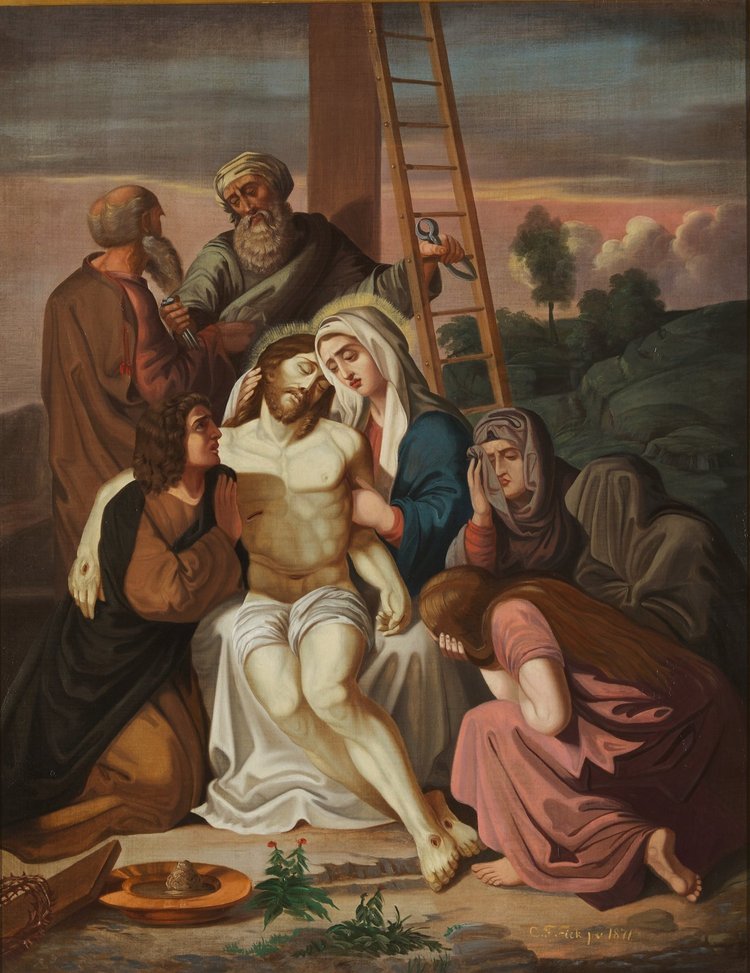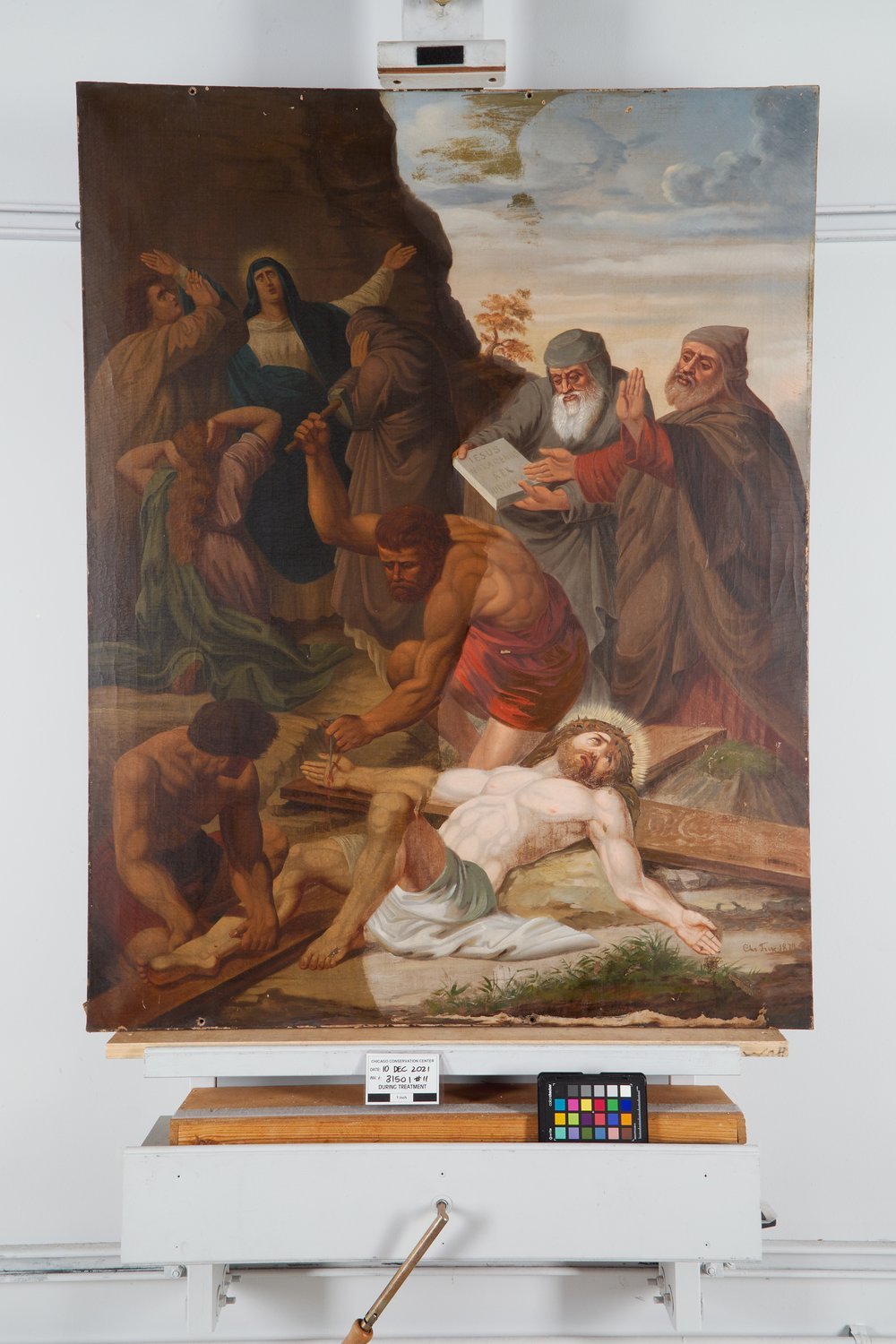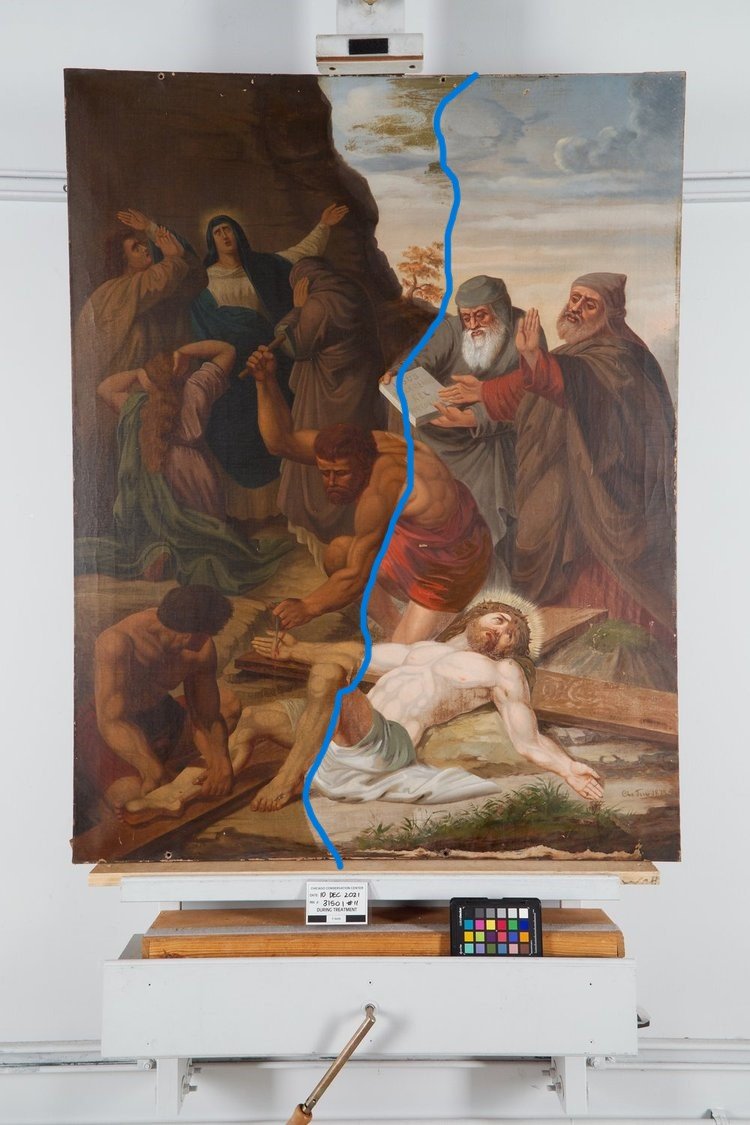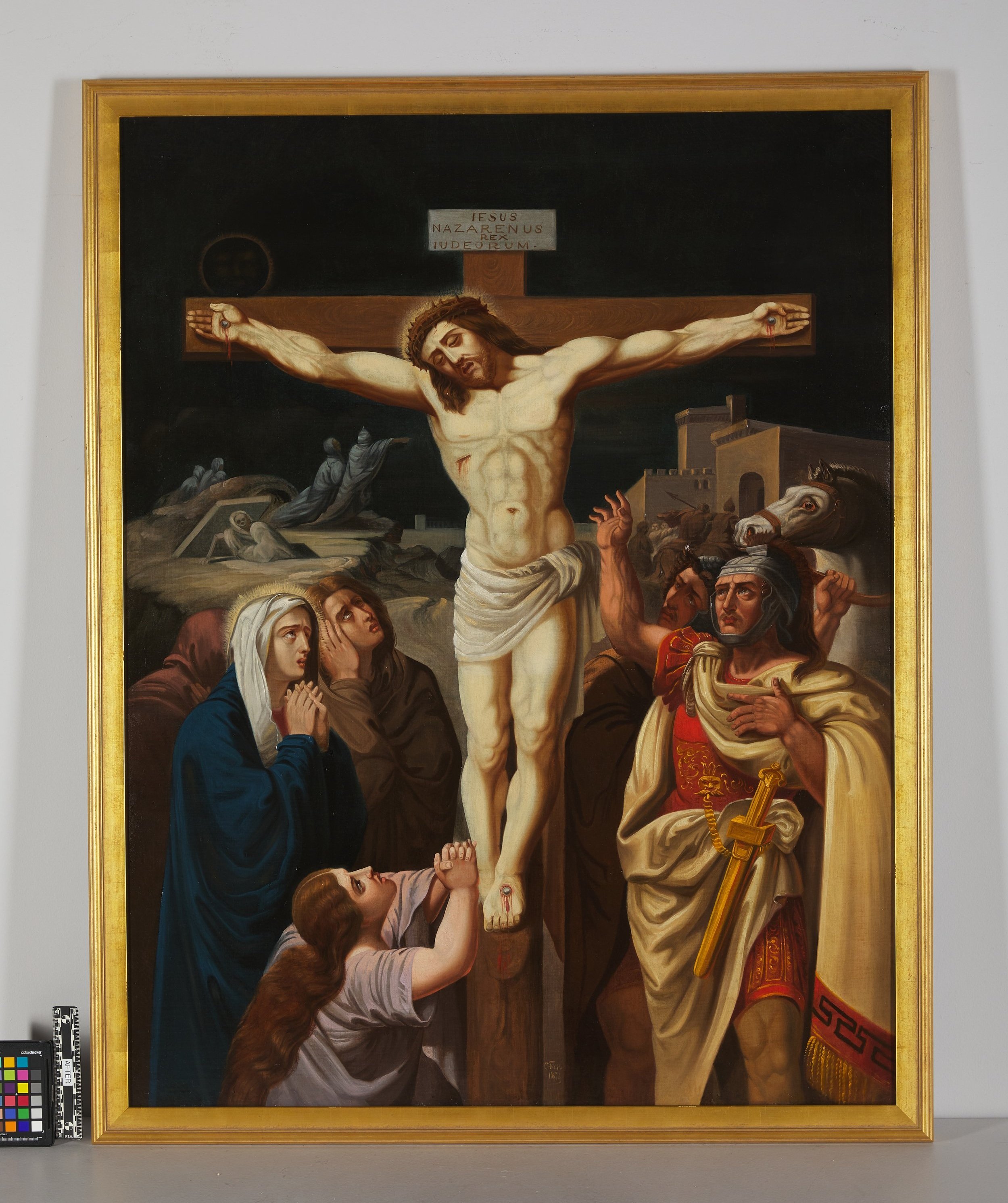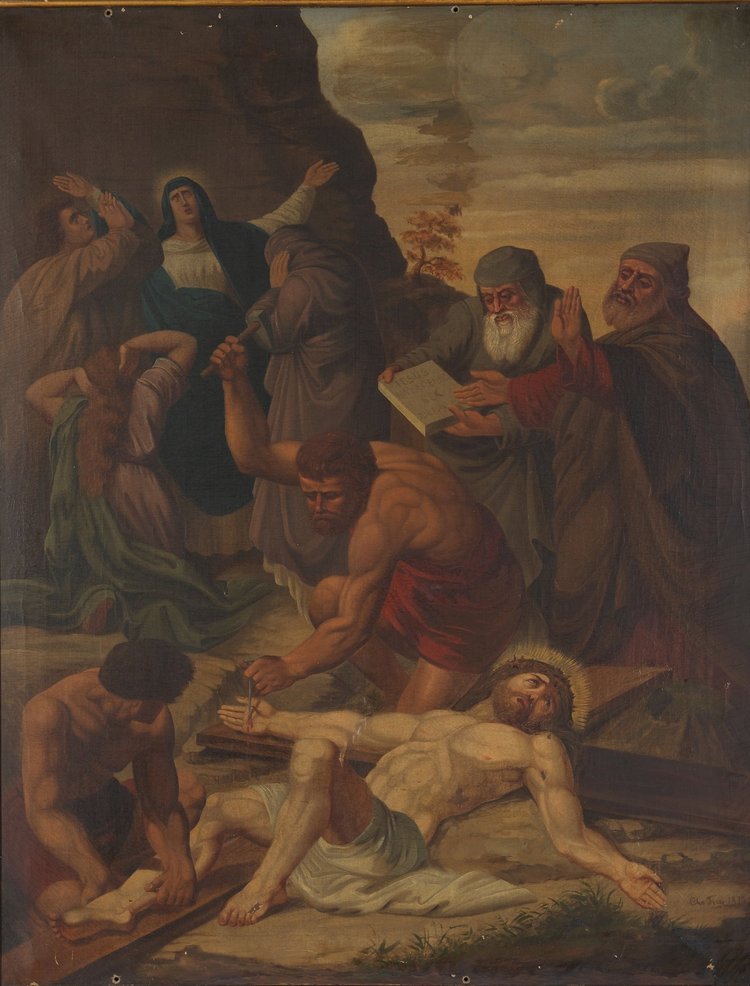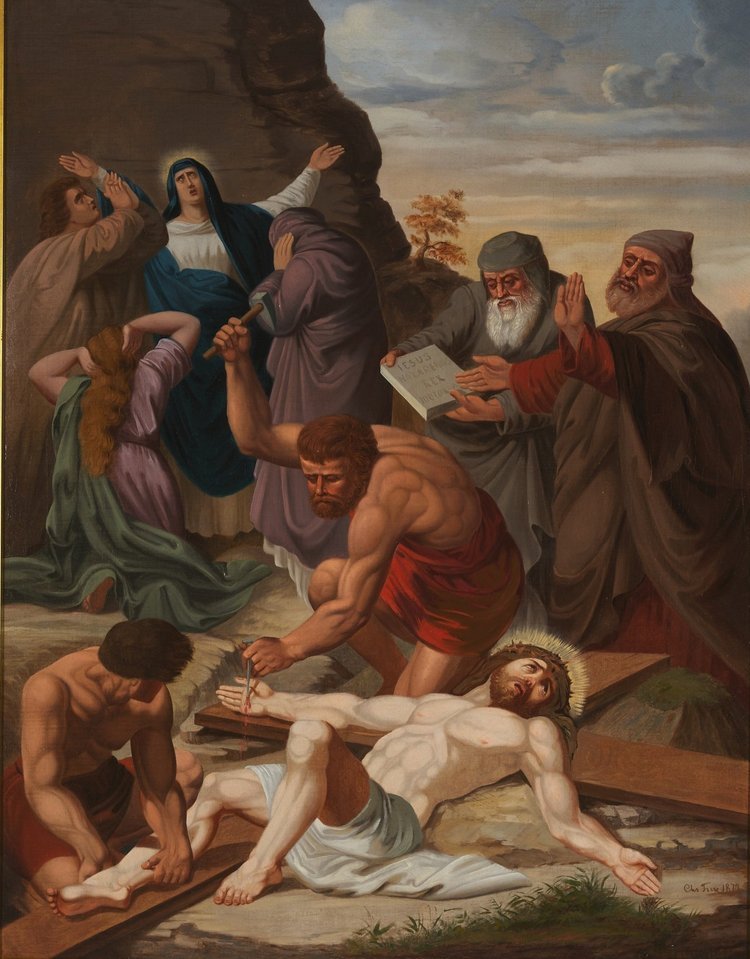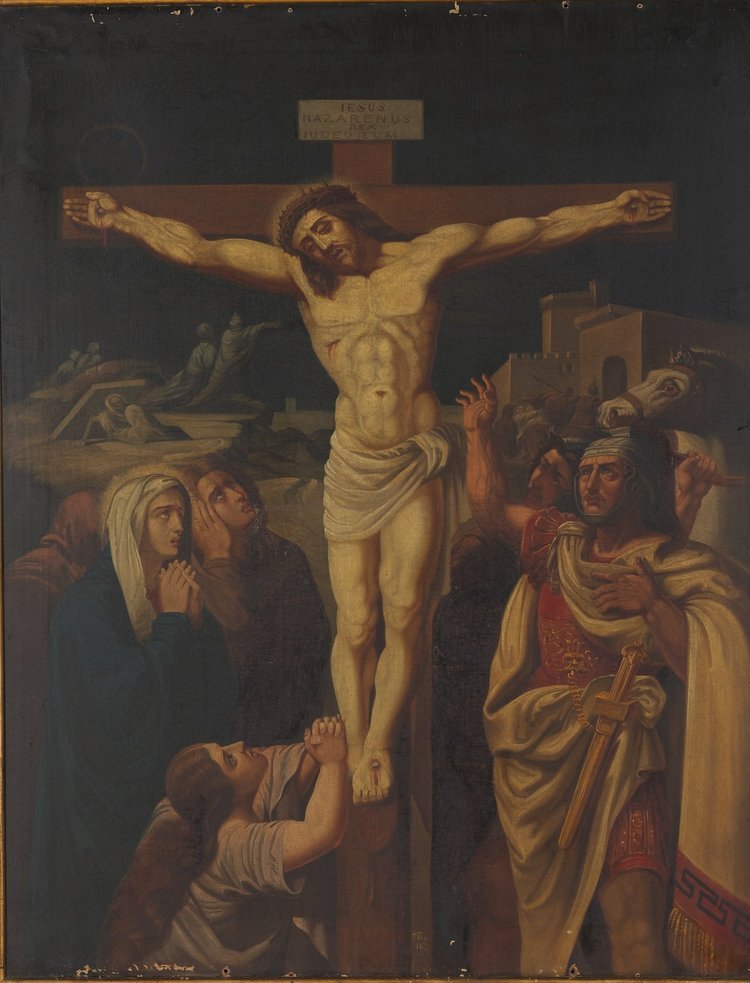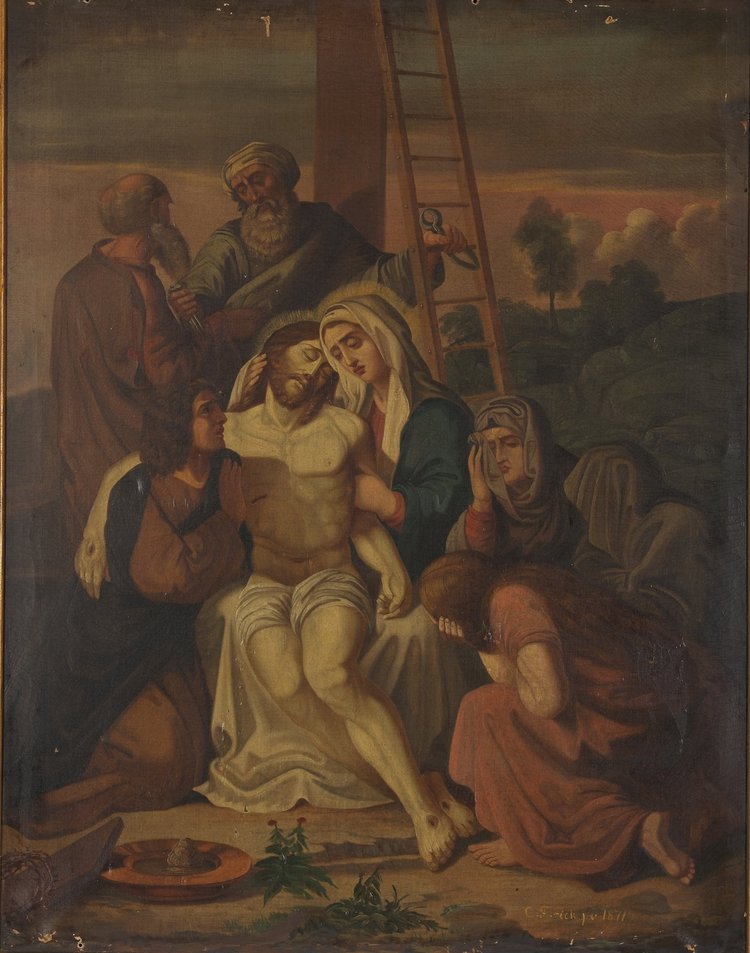Founded in 1837 in Davenport, Iowa, St. Anthony Catholic Church is the second oldest Catholic church west of the Mississippi River. The historic church has evolved over the years, from a small 3-room building shared with the local judicial court and town hall, to merging with neighboring parish St. Mary's Catholic Church in July 2020. As a result of the merger, St. Anthony's has two sets of the Stations of the Cross; one, plaster relief sculptures set in the walls of the church, and the second, a set of large oil paintings from St. Mary's. As John Cooper, Pastoral Associate at St. Anthony Catholic Church shares, "Both sets in their own unique ways, accomplish the artistic purpose of pulling you into the scene with Christ."
Recto of Station 11, "Jesus is Nailed To The Cross," Before Treatment
Verso of Station 11, "Jesus is Nailed To The Cross," Before Treatment
In 2021, St. Anthony's contacted The Center to begin the work of conserving their Stations of the Cross paintings. Most recently, Senior Painting Conservator Amber Schabdach conserved three of these paintings with truly stunning results. They are the 11th, 12th, and 13th Stations, "Jesus is Nailed To The Cross," "Jesus Dies On The Cross," and "Jesus is Taken Down From The Cross."
Recto of Station 12, "Jesus Dies On The Cross," Before Treatment
Recto of Station 13, "Jesus Is Taken Down From The Cross," Before Treatment
The treatment campaign for each painting followed the same steps. First, the surfaces of the paintings were cleaned of grime and surface particulates, before removing the old varnish layers with conservation-appropriate solvents, after testing. Amber noted that the removal of the grime and discolored varnish resulted in an incredible change. "The paintings were covered in thick layers of heavy discolored varnish and years of particulates like smoke and candle fumes, which had darkened the paintings considerably. Cleaning them was almost as dramatic as the cleaning of the Sistine Chapel, in that the colors were so vibrant once cleaned."
Station 11 During Treatment; note the cleaning line at the center of the painting, was the discolored varnish is in the process of being removed.
Next, each painting was removed from its stretcher in order to flatten canvas deformations and consolidate any areas of flaking paint. Due to the fragility of the original canvas, the tacking edges of the paintings were reinforced with Japanese tissue before the addition of a secondary lining canvas using reversible conservation-grade adhesives. Then the paintings were ready for re-stretching onto their original stretchers which had been modified as necessary to allow for the use of stretcher keys.
Verso before treatment
Verso after treatment and restretching
Areas of loss were then addressed with conservation fill materials before the application of an isolating layer of varnish. Then, Amber was able to inpaint the areas of loss with conservation paints, which are reversible and separated from the artist's original paint by the isolating varnish layer. A final layer of varnish protects the inpainting and saturates the paint colors.
During treatment, the process of filling losses and inpainting is documented by photography taken under UV light.
During treatment, the process of filling losses and inpainting is documented by photography taken under UV light.
During treatment, the process of filling losses and inpainting is documented by photography taken under UV light.
Painted in 1870-1871 by Davenport, Iowa artist C.F. Fick (1825-1898), these Stations of The Cross were based on originals done in the United Kingdom from 1825 to 1830. Horace Bradley, a well-known businessman of Davenport, commissioned Fick to paint the Stations. John Cooper notes that "Fick draws upon all the previous works, as well as taking some of his own artistic liberties, in what he highlights and adds in the background of each station. Part of what really draws you into each of these scenes is finding the subtle images that are included." We are honored to have revealed the vibrancy of these paintings, allowing their true colors to stand out once again, and are looking forward to sharing the progress of the other Stations as conservation continues.
Recto of Station 11, "Jesus is Nailed To The Cross," After Treatment
Recto of Station 12, "Jesus Dies On The Cross," After Treatment
Recto of Station 13, "Jesus Is Taken Down From The Cross," After Treatment


